 |
 |
 |
| |
Cascade of care and HCV treatment of inner city (PWID)
populations engaged in care through community pop-up clinics (CPCs) SVR 97%
|
| |
| |
EASL 2023 June 21-24 Vienna
Brian Conway1,2, Shawn Sharma1, Shana Yi1, Giorgia Toniato1, David Truong1, Rossitta Yung1. 1Vancouver Infectious Diseases Centre, Vancouver, Canada; 2Simon Fraser University, Burnaby, Canada
On a weekly basis, a team (including health care providers and support staff) conducts a CPC event at a single room occupancy dwelling in the inner city to provide point-of-care HCV testing or ascertain previously identified HCV infection status.
Treatment for HCV infection is offered in the context of a low-barrier program with medications delivered daily/weekly, at the place of residence, local pharmacy or at our community clinic. Strategies are in place to limit loss to follow up and maximize engagement and retention in care throughout treatment and thereafter, to ascertain if cure has been achieved. The principal outcome of this analysis was the rate of achievement of cure of HCV infection and its correlates.
Almost 2/3 experience housing insecurity, while the vast majority use opiates/fentanyl, with half having experienced a recent medically significant overdose. The majority have high school or greater education and over 60% have experienced incarceration. Over 80% smoke, while living in buildings that are, by city by-law, non-smoking.
(33.6%) were found to carry HCV antibodies. Of these, 331 (69.4%) were found to be viremic. Engagement in care has been secured in 289 cases (87.3%): 252 (87.2%) individuals have started treatment, 36 are in the pre-treatment phase, and 1 had died of an overdose in the pre-treatment phase.
By mITT analysis, the SVR rate is 97.3% (217/223). Overall, in this vulnerable population with 6-7 opioid overdose deaths/day, we only documented 2 overdose deaths over 326 PY of overall follow-up.
Of 252, 237 have completed treatment, 11 remain on treatment, 3 stopped prematurely due to side effects, and 1 died of an overdose during treatment. Of 237 subjects who have completed treatment, 217 are confirmed as cured (SVR 12), 18 are awaiting SVR status 2 failed therapy with a documented virologic relapse (1 being cirrhotic).
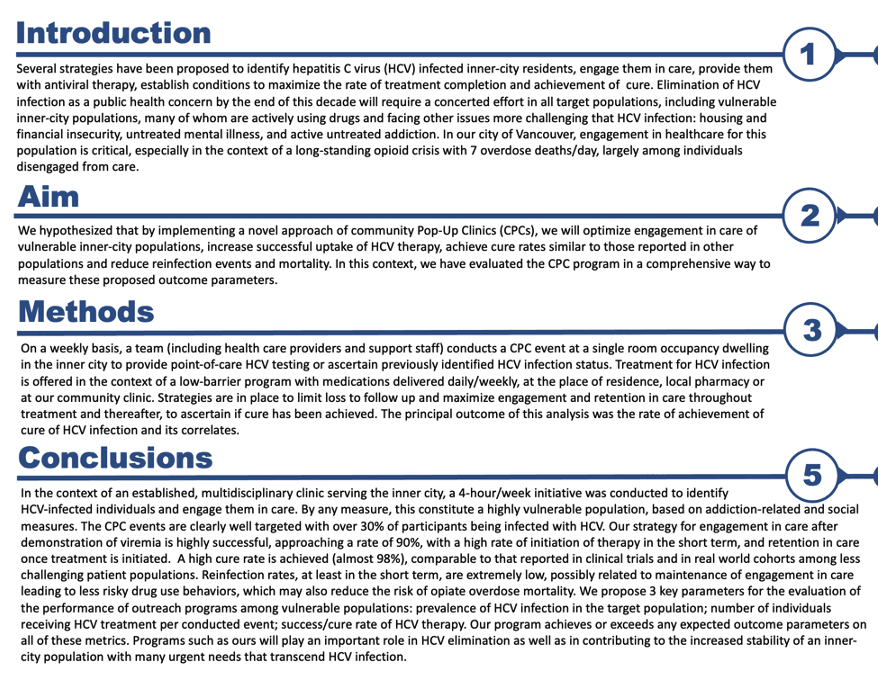
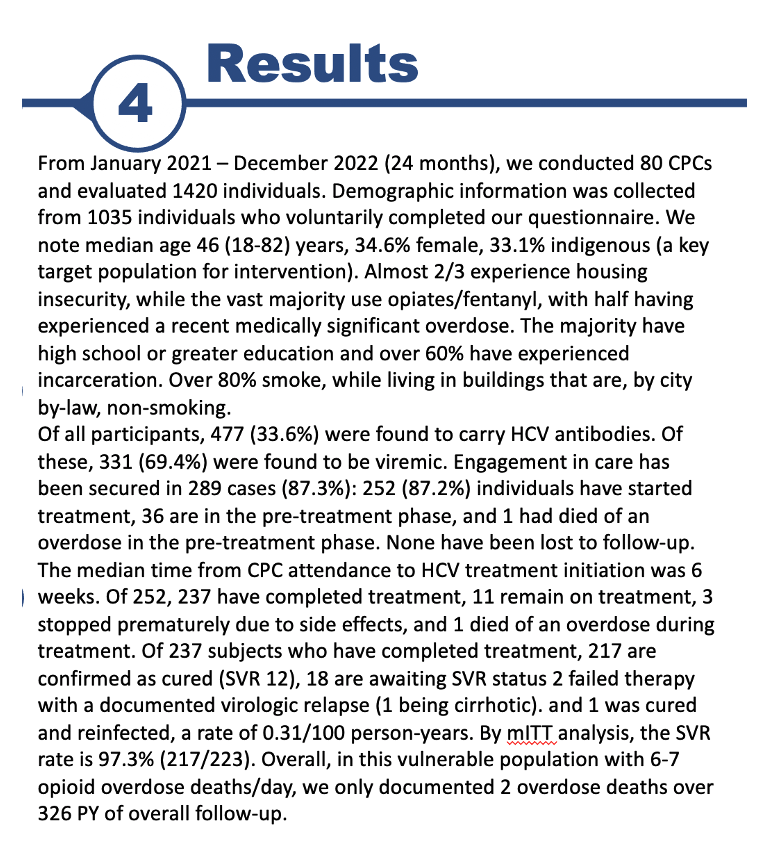
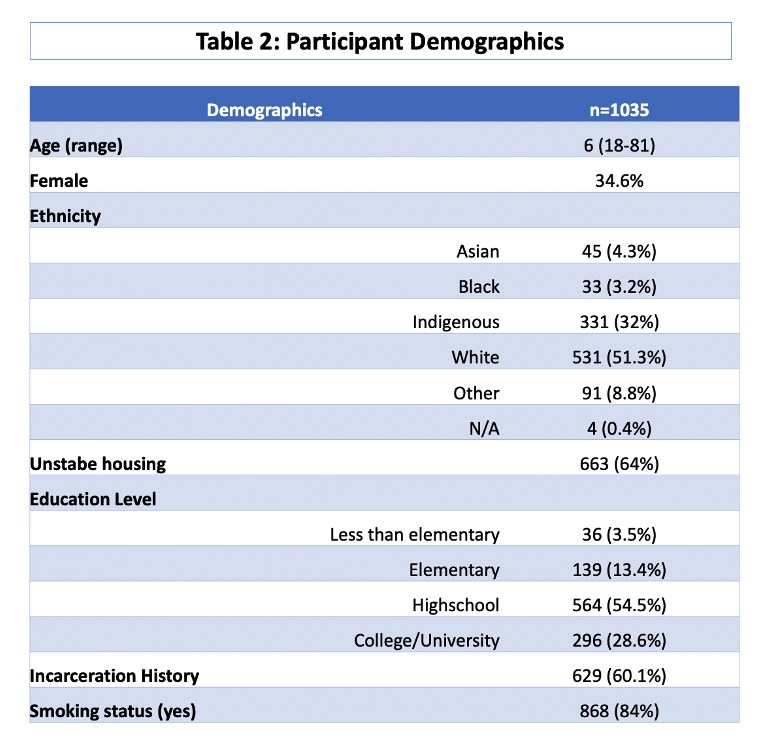
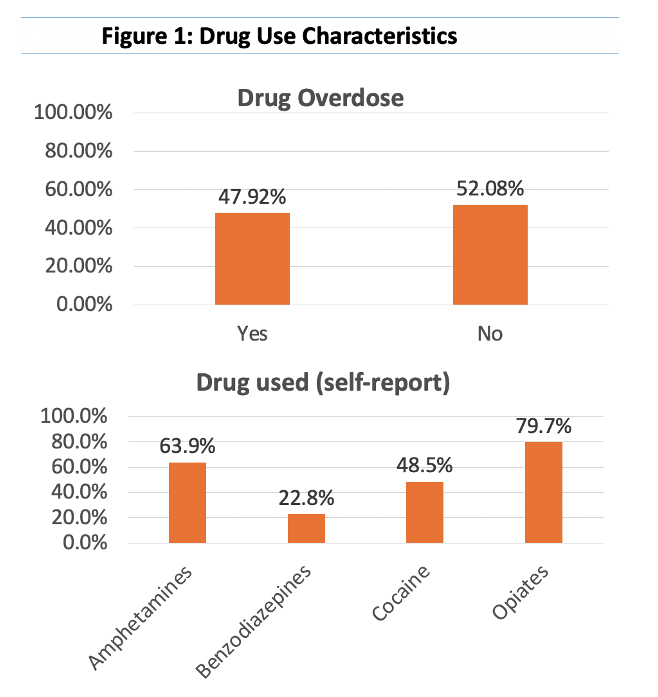
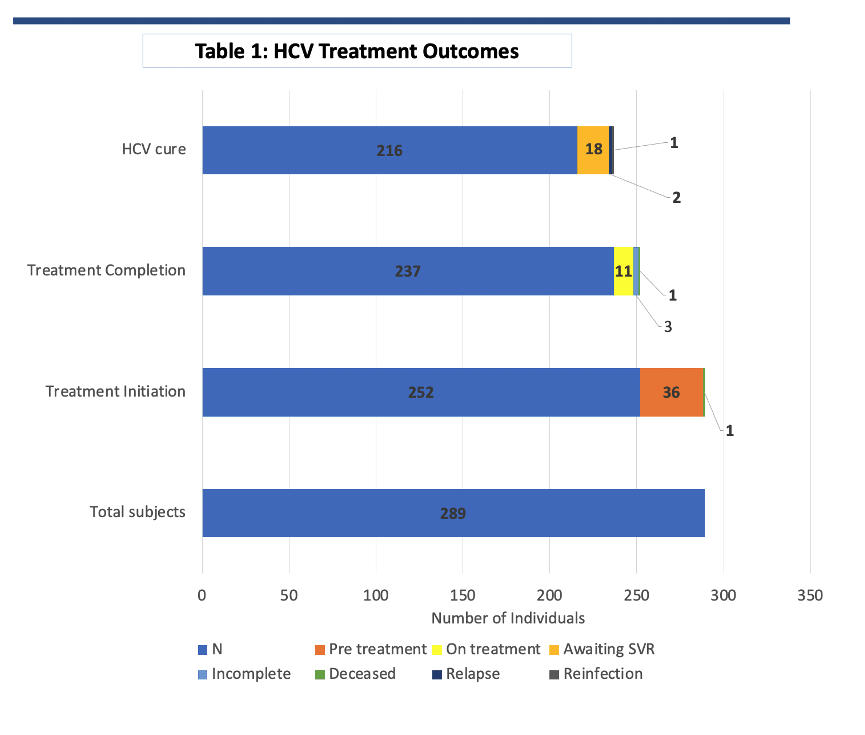
|
| |
|
 |
 |
|
|